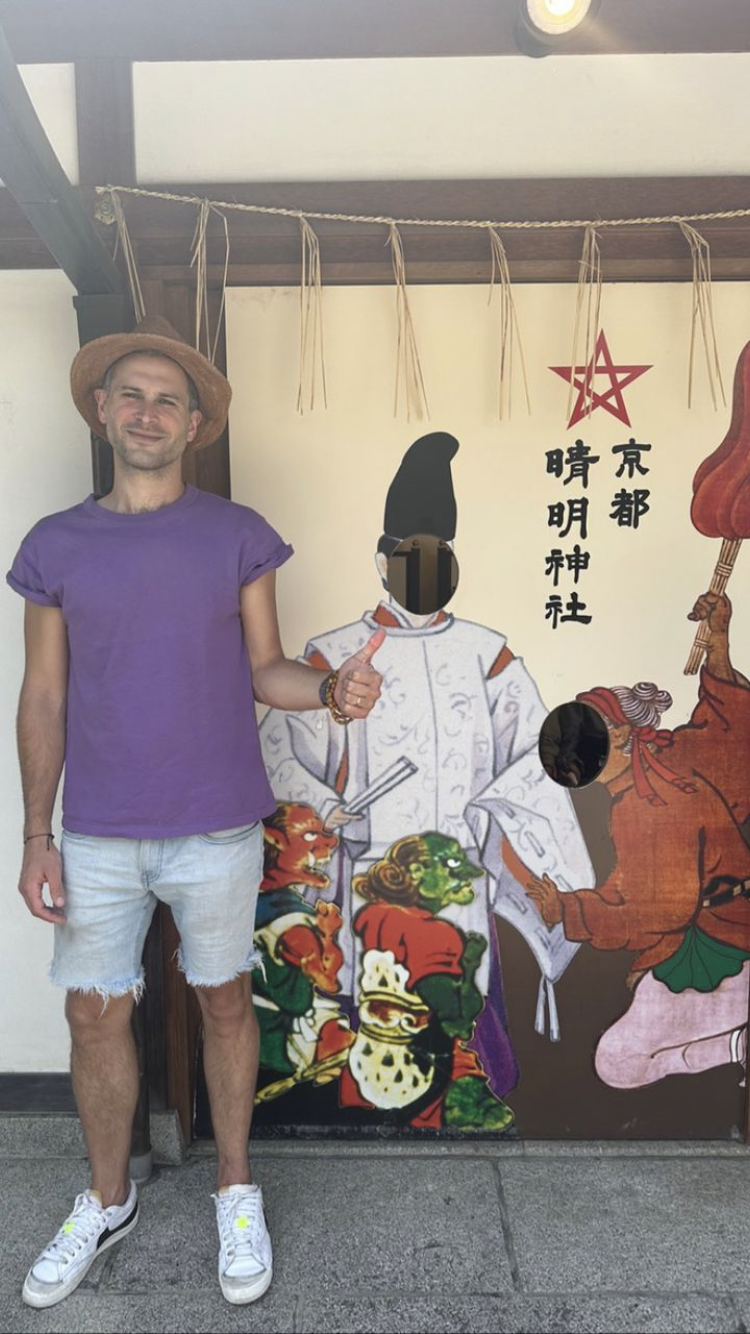
Why did you choose to exchange to this university?
There’s a few different answers to this question. A general answer is that, having studied anthropology in a few countries, I’ve become really interested in understanding the different cultures that exist within anthropology as a discipline, particularly outside of the North Atlantic. The blend of Science and Technology Studies and anthropology in Japan is particularly exciting, and not as well-known as it should be. University of Tokyo is full of researchers–Dr. Takahiro Miyachi, Dr. Yuichi Sekiya, and Dr. Mayumi Fukunaga, in particular–who do great work on disaster relief, the environment, and international humanitarianism. More often than not, this research is grounded in direct experience of living with the volatile Earth under their island, where tectonic plates never really fall into the background. University of Tokyo’s Komaba campus also has an amazing Latin American initiative called LAINAC [Latin American and Iberian Network for Academic Collaboration], a truly interdisciplinary Latin America-focused research program, so I could complement my conversations about technology, the Earth, and social life with discussions about the political economy of the Americas.
What has been the academic focus during your stay/what have you been working on?
Official documents from the Mexican Government tend to require an askance reading; often there’s a subtext that is obliquely referred to, but not articulated completely. I knew that, as Mexico City developed its earthquake early warning system (the focus of my dissertation research), Japanese seismologists were visiting Mexico City to install the technologies, train engineers and seismologists, and contribute to regional research–and yet, official Mexican documents only showed that the system was implemented “con el apoyo del gobierno japones [with the support of the Japanese government]”. This phrase was repeated, but there were no concrete data, despite the two nations’ long history of scientific collaboration. In Tokyo, I was able to obtain these data, and see that massive work that Japanese seismologists had undertaken to not only make Mexico City safer, but to turn Mexico into a regional partner with whom Japan could triangulate during earthquakes throughout Central America. It permitted me to plug what felt like a big gap in my research.
What have been the benefits of your stay, both in relation to work and your wider professional development?
A really important benefit was articulating my research for people with a very different historical relationship with earthquakes. For the most part, I had only talked about my research with people familiar with Mexico City’s earthquakes, or people who had never experienced one–the demand to explain my research focus to people intimate with a different volatile Earth was challenging and exciting, as was finding surprising commonalities in peoples’ experiences. Earthquakes have played a large role in the development of Japan as a nation, the materiality of Tokyo as a city, and the sense of risk that its residents carry, but it was all very distinct from Mexico City, so talking across that difference helped me to reconceive my research and lift it out of Mexico City a little. Dr. Takahiro Miyachi gave me the opportunity to present my research for LAINAC, and I was able to receive feedback from Latin Americanists who were not from the United States or Europe, so their comments were full of insights that I hadn’t heard before. This helped me to really think about my research beyond the framings I’d inherited. I also made friends with some early career anthropologists, namely Moe Mamiya and Ayuhiko Wada, who are both doing amazing work, and you can never have too many friends.
Any surprising outcomes of your stay?
An earthquake struck during my stay that was severe enough for Tokyo’s warning system to be activated on everyone’s mobile phones. I had never heard Tokyo’s alert before, and it is substantially different to Mexico City’s–loud, aggressive, terrifying; Mexico City’s is just eerie and unsettling–and because my phone is in Spanish, the announcement was in Spanish. It struck at about 4am, and I recall staring at my phone in bafflement, wondering why it had begun playing a techno song called “Terremoto”. I was so confused I didn’t even notice the shaking. It was strange to feel a different culture of seismicity in such a visceral way.
About the project
The department of Social Anthropology has received NOK 10 million from the Research Council of Norway to build strategic collaborations in environmental anthropology with key institutions in the United States, Japan, and South Africa. This is part of the International Partnerships for Excellent Education, Research and Innovation programme.
The funding is in line with the government's Panorama strategy: Panorama strategy (2021-2027) - regjeringen.no.
As a result, the department has sent PhD and postdoc candidates on exchanges between the various institutions for research stays. So how has their experience been? And is the project working as intended, aiming at building new strategic networks and collaborations?
More interviews:
Eda Tarak: Reflections on the INTPART visiting scholar exchange
Sonja Irene Åman: Exercising forgotten muscles through academic exchange
Anselmo Matusse: Changed my perspective on academic writing as a solitary undertaking
Jess Auerbach: A space for real reflection and invaluable feedback